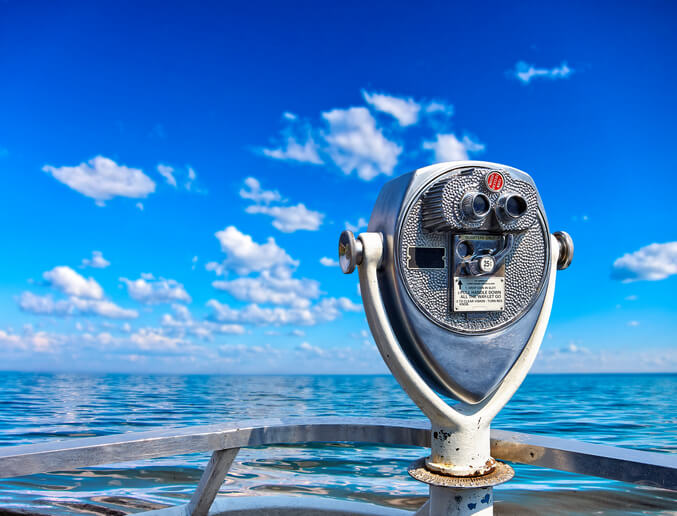With recent moves being made throughout the Atlantic Coast, the American Wind Energy Association (AWEA) says the vast U.S. market for offshore wind is coming into focus.
AWEA is expressing its thanks to leaders up and down the coast for advancing offshore wind projects that have the potential to create 40,000 jobs within a decade, revitalize ocean ports and power millions of homes with clean energy.
“Unlocking America’s vast offshore wind potential will reliably deliver large amounts of clean power, grow jobs and cement American energy leadership,” comments Tom Kiernan, CEO of AWEA. “Some of the world’s most powerful wind turbines will now flow from new investments in America’s port and manufacturing infrastructure. We are grateful to Governors Phil Murphy of New Jersey, Andrew Cuomo of New York and Dannel Malloy of Connecticut for recognizing the enormous potential for clean energy off their shores and acting to make it a reality as soon as possible. This is what visionary leadership looks like.”
Newly sworn-in New Jersey Gov. Phil Murphy announced on Jan. 31 that his state will move ahead with 3.5 GW of offshore wind by 2030, enough to power over 1 million homes. Murphy said he wants to “begin the process of making New Jersey a leader in offshore wind, a critical step toward achieving our clean energy goals.” He directed the New Jersey Board of Public Utilities and the New Jersey Department of Environmental Protection to establish an Offshore Wind Strategic Plan focusing on job growth, workforce development, data collection and protection of offshore natural resources.
“Gov. Murphy has immediately put New Jersey at the forefront of the global offshore wind industry,” says Riccardo Toto, president and CEO of US Wind, which holds leases off New Jersey and Maryland. “By growing the U.S. market, this will help foster a more robust U.S. supply chain and further drive down costs to the benefit of consumers, who now pay some of the highest power prices in the nation.”
“The U.S. is in a prime position to take advantage of the positive developments in the offshore wind industry, including rapid cost declines and innovative technologies,” says Thomas Brostrøm, president for North America at Ørsted, which holds leases off Massachusetts, New Jersey and Virginia. “Recent commitments by New Jersey and Connecticut build on a foundation of projects along the East Coast and enable the efficient growth of this clean energy industry and supply chain. Ørsted is invested in bringing this thriving industry to the states and supporting the U.S. development of this large-scale, reliable clean energy.”
New York recently issued its new Offshore Wind Master Plan. Gov. Andrew Cuomo said his state is seeking offshore wind farms totaling 2.4 GW (equal to about five fossil fuel-burning power plants). New York is looking at a 16,000-square-mile section of the Atlantic extending from New York City and the south shore of Long Island. Statoil won the first lease in New York in 2016 for an area 20 miles south of Long Island, where it is planning a 600 MW project called Empire Wind. Once it finds a buyer for the power, construction could begin in 2023. In January, Cuomo also announced two initial solicitations for a total of 800 MW in 2018 and 2019, plus $15 million for training and port development.
Connecticut recently announced a request for proposals for clean energy, as well, which includes up to about 220 MW of offshore wind power.
Notably, a new study co-authored by New York, Massachusetts, Rhode Island and the Clean Energy States Alliance – U.S. Job Creation in Offshore Wind – finds that 8 GW of offshore wind from Maryland to Maine would create almost 40,000 full-time U.S. jobs by 2028, and 86 GW by 2050 would support 160,000 jobs.
“The visible market for offshore wind in America is now more than half the entire global installed capacity, including all the policy commitments made thus far,” says Stephanie McClellan, director of the Special Initiative on Offshore Wind at the University of Delaware. “These states’ commitments mean the U.S. is going to be the 800-pound gorilla in global offshore wind.”
According to AWEA, Trump administration officials have signaled their support for offshore wind, including by issuing draft guidelines in January for a “design envelope” approach. It enables developers to advance faster through permitting while making some business decisions later in the process – such as which turbines to use. The U.S. Bureau of Ocean Energy Management (BOEM) is seeking industry input before finalizing the guidelines and held a webinar on Jan. 31 for wind developers to weigh in.
“The Outer Continental Shelf’s offshore wind potential is a tremendous asset and part of the administration’s America-First Energy Plan to make it easier for industry to do business here,” said Ryan Zinke, secretary of the U.S. Department of the Interior (DOI), when BOEM announced the guidelines. “And now more than ever, we must use every tool at our disposal to ensure an energy-secure future – one that promotes jobs and is affordable, competitive and safe. Offshore wind will play a big role in this future.”
BOEM’s announcement also cited the DOI’s counselor for energy policy, Vincent DeVito, who said, “The offshore wind industry is moving at a phenomenal pace, and I’m proud to announce that this administration is working with industry and stakeholders to make the renewable energy development process quicker, cheaper and more competitive with the rest of the world.”




